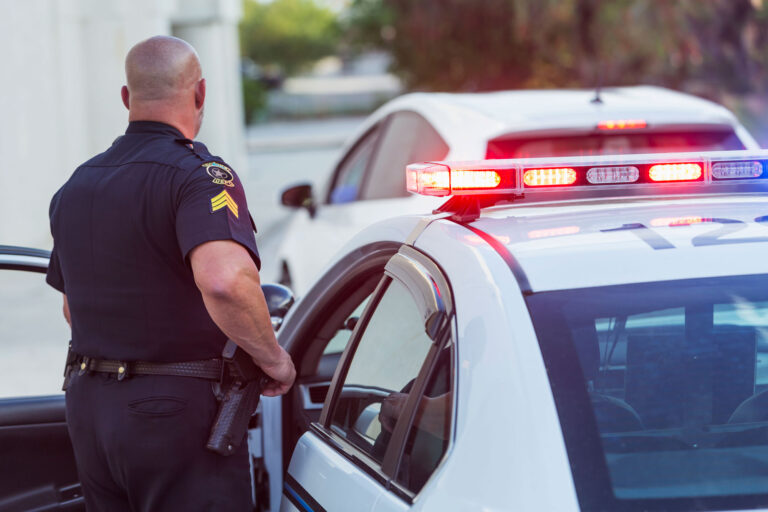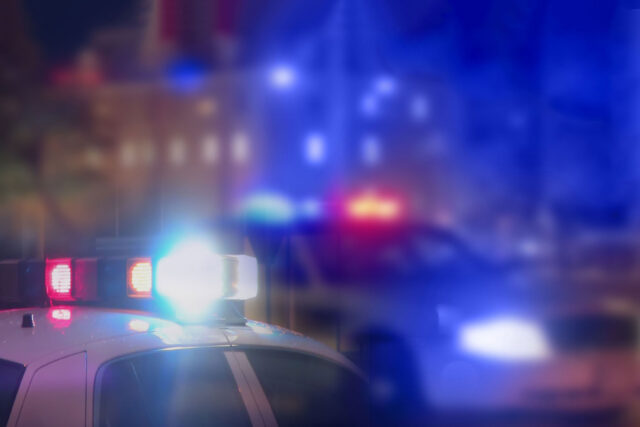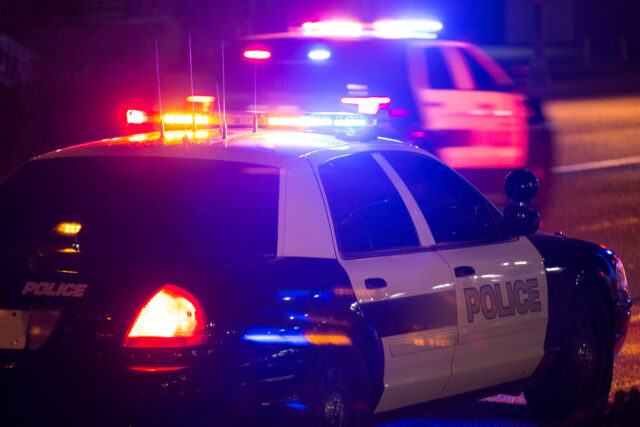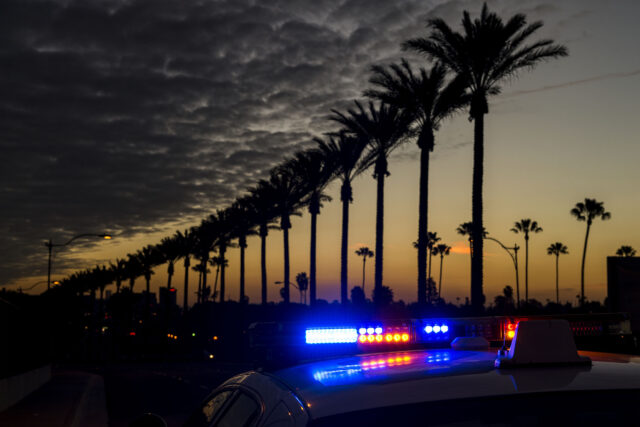After the death of Tyre Nichols, Memphis and other cities are considering ordinances to reduce pretextual stops—the use of minor traffic violations as grounds for investigations or searches. In California, a handful of cities have already limited the use of certain minor traffic violations as the basis for a police stop, and state legislation has recently been proposed to make that change statewide. We recently highlighted how traffic stops contribute to use-of-force incidents and racial disparities in interactions with law enforcement. As more localities consider reforms, it is important to evaluate how instrumental these traffic stops are in seizing illicit firearms.
To that end, we looked at the number of searches during traffic stops that have resulted in guns being found and confiscated across the eight largest police departments in the state: Los Angeles, San Diego, Sacramento, San Francisco, San Jose, Fresno, Long Beach, and Oakland. On average, these departments confiscate firearms in about 0.5% of searches during traffic stops (about 560 out of 103,800 searches). However, there is significant variation across departments: San Jose has one of the lowest shares of firearm confiscation (0.7% of stops where the driver was searched) along with the highest search share (20.2% of stops), while Fresno has one of the highest gun confiscation shares (1.6%) and the lowest search share (4.6%).
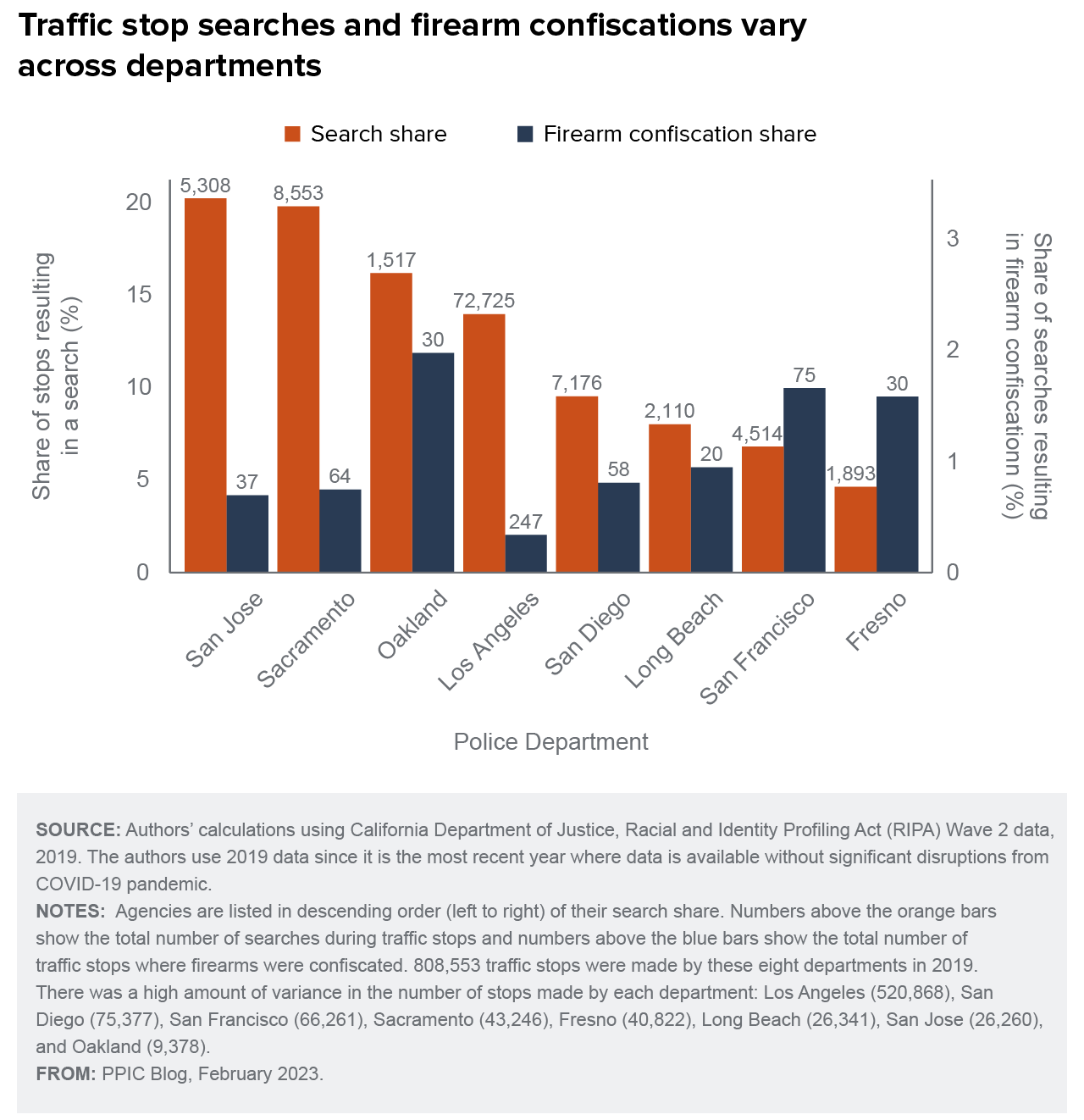
Departments that conduct proportionally more searches during traffic stops typically confiscate lower shares of firearms. Searches and confiscations that occur during traffic stops for non-moving violations follow a similar pattern. However, there are notable exceptions: Oakland has a relatively high share of traffic stops that end up in searches but confiscates a relatively high proportion of firearms. Conversely, Los Angeles confiscates a low percentage of firearms relative to its search share. These exceptions could be related to the overall number of stops conducted by the Oakland and Los Angeles police departments: among the agencies we examined, Oakland conducted the fewest stops (9,378), while Los Angeles conducted by far the most stops (520,868). (Even after accounting for population differences, we find significant discrepancies in stop rates across cities.) And, of course, our findings are affected by variation across all eight departments in traffic stop and search practices, as well as the concentration of firearms.
Two types of searches—those conducted with the consent of a stopped individual and those based on supervision status (e.g., parole or probation)—have been targeted for reform; these search types require a lower level of evidence of criminal misconduct. Both consent and supervision-status searches result in notably smaller shares of firearm confiscation—with fewer than a fifth and a half of the share of firearms confiscated on average, respectively. In fact, Oakland, San Francisco, and San Jose police departments did not confiscate any firearms in any of their consent searches—though Oakland and San Francisco conducted very few consent searches to begin with.
These trends also hold for the subset of searches that take place during traffic stops for non-moving violations. Other search types—such as warrant searches, searches prompted by evidence of a crime, and searches under exigent circumstances (urgent or dangerous situations where discretion is low)—resulted in much higher shares of firearm confiscation (3.1%, 4%, and 4.8% respectively) than consent and parole/probation searches.
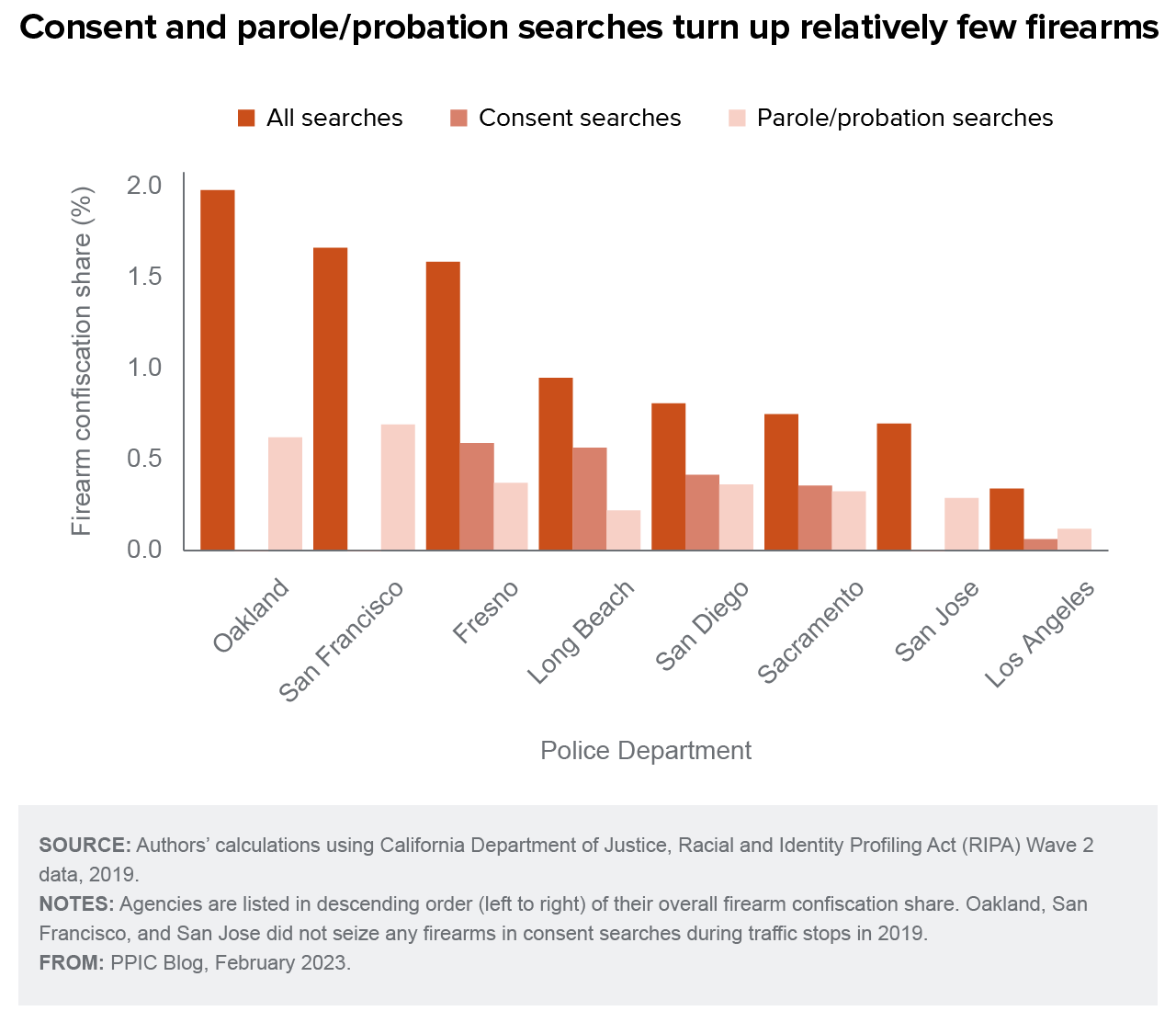
As we noted, firearms were confiscated in about 560 out of 103,800 traffic stop searches in 2019, a relatively small share (0.5%). This share varies significantly by agency—and agencies that conduct fewer searches during traffic stops tend to seize a greater share of firearms—but it is below 2% for every department. Consent and supervision-status searches garner a significantly smaller share of firearms, especially compared to those based on a higher evidentiary standard, such as warrant searches. But even though the shares of firearms confiscated in these searches are small, they may be having a positive impact on public safety. As agencies consider traffic stop reforms to reduce racial disparities or serious use-of-force injuries, they should take a data-driven approach that can help them evaluate any positive and negative impacts.

